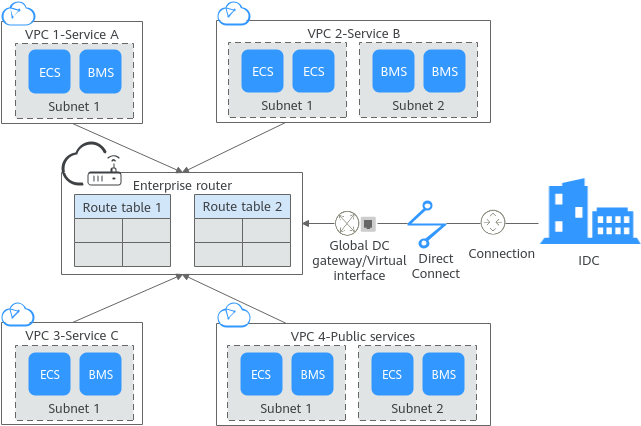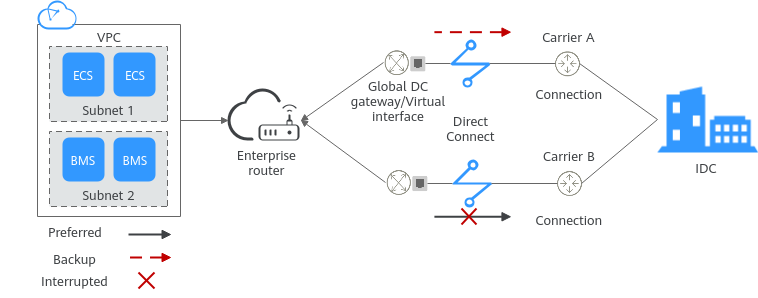When to Use Enterprise Routers
You can use enterprise routers to build cloud networks. Here are some typical application scenarios:
- Scenario 1: Multiple VPCs communicating or not communicating with each other on the cloud, but communicating with the on-premises data center through a Direct Connect connection
- Scenario 2: Dynamic switchover between Direct Connect connections
Scenario 1: Multiple VPCs communicating or not communicating with each other on the cloud, but communicating with the on-premises data center through a Direct Connect connection
Figure 1 Diagram for scenario 1

Customer Requirements | Multiple service networks communicate or do not communicate with each other on the cloud but communicate with the on-premises data center. Suppose you require three VPCs for running services (Service A in VPC 1, Service B in VPC 2, and Service C in VPC 3) on the public cloud, and the three VPCs need to access public services in VPC 4 and your on-premises data center. |
|---|---|
Pain Points |
|
Benefits of Using Enterprise Routers |
|
Scenario 2: Dynamic switchover between Direct Connect connections
Figure 2 Diagram for scenario 2

Customer Requirements | Some services run on the public cloud and some in the on-premises data center. Two independent high-bandwidth Direct Connect connections are deployed between the public cloud and the data center to enable communication between them. |
|---|---|
Pain Points | Two Direct Connect connections are independent of each other and cannot work in load-sharing or active/standby mode. |
Benefits of Using Enterprise Routers | Direct Connect connections are connected to the enterprise router.
|
- Scenario 1: Multiple VPCs communicating or not communicating with each other on the cloud, but communicating with the on-premises data center through a Direct Connect connection
- Scenario 2: Dynamic switchover between Direct Connect connections